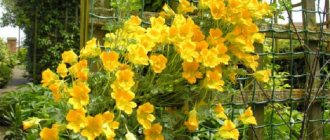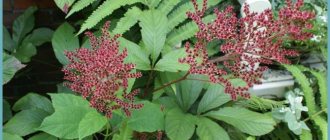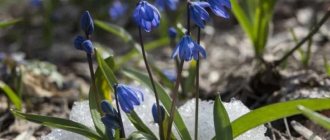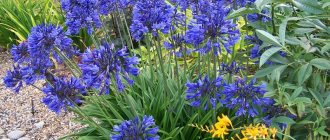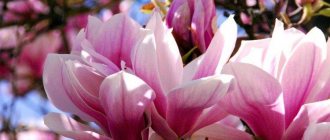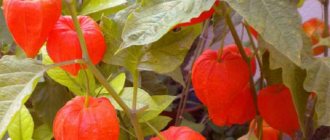Garden jasmine, or mock orange, can be called truly royal among unpretentious shrubs. This is an unpretentious flower that pleases gardeners with the durability and splendor of flowering. During the flowering period of garden jasmine, a gentle and romantic atmosphere is created in the garden, making the shrub a favorite of many gardeners.
Description
It is a climbing or erect, evergreen shrub of the olive family. The leaves are uniformly green in color, trifoliate or odd-pinnate in shape.
Flowers with a large corolla of regular outline, white, pale yellow or pink, with a pronounced sweet aroma. Flowering ends with the formation of an inedible berry.
The habitat today is represented by almost all the warm edges of the planet - from Africa and Australia to central America and southern Europe.
Some types of jasmine also grow in Russia, the northern Caucasus, Crimea, Kuban, Altai, and Southern Urals. Artificial cultivation is widely practiced in China.
Symbolism of Jasmine
The noble white color and delicate aroma have been valued by people since ancient times. They associated them with nobility, grace and benevolence.
Thus, in Christianity, jasmine is considered the flower of the Virgin Mary. In China, Thailand and Indonesia, jasmine symbolizes femininity and purity.
Indonesians call it “melati” and actively use it, for example, at wedding ceremonies. Among the Tatars, jasmine is considered a sacred plant - to get to heaven, a person must grow jasmine.
Varieties
More than 250 varieties of this plant are known, which appeared through natural processes or created by breeders. The most famous and widespread.
Turned away. It is distinguished by bright yellow inflorescences and a strong aroma throughout the entire flowering period. Honey plant actively attracts bees and other insects. The leaves are paired, bright green.
Sambac. A liana-like variety that can grow up to 6-8 meters in length. Large leaves, and neat white inflorescences are collected in fragrant bouquets. The woody stems give a special aesthetics; landscape designers and those who like to decorate their garden plot with hedges liked all this.
Flattened. A shrub that, if properly pruned, pleases with a large number of flowers in soft pink shades and an equally refined scent that exudes all summer.
Bisa. One of the most popular decorative varieties. The vines reach a length of 2-3 meters and are strewn with umbrellas of large bright pink inflorescences with a bluish tint. If desired, you can also give it a bushy form. Combined with large, dark green leaves to create a wonderful tool for forming a living wall.
Drug. The most popular among window sill pharmacy lovers. Despite its main purpose, it has good decorative qualities. Smooth branches covered with oblong leaves and white racemose inflorescences look quite nice, and they will delight you with flowering for a long time - from April to autumn.
The thinnest. It is distinguished by “falling” shoots and large white inflorescences. The aroma, although not as pronounced as that of the above-described species, has pleasant specific notes. The leaves are dirty green, slightly pubescent at the base.
Multi-flowered. A very large, lush shrub up to two meters high, during the flowering period it is covered with an abundant “carpet” of pink and white flowers. It has the most powerful aroma of all known varieties. In addition, it is easy to recognize by its unusually shaped leaves, reminiscent of a wavy dagger.
Large-flowered. As can be understood from the name, it is distinguished by large white flowers, collected in umbrellas of 7-10 pieces. The shoots themselves can be up to ten meters long, which provides wide decorative possibilities, but imposes some pruning responsibilities.
Preparing for winter
In order for the plant not to die in winter, it must be properly prepared for this difficult period. To do this, you need to perform a few very simple manipulations:
- It should be remembered that adult specimens are more frost-resistant than young ones. Therefore, it is quite possible not to prepare adult plants for the winter period. However, those jasmines that are still quite young need this procedure.
- When the bush fades, it should be wrapped in material specially designed for this. You can also use regular straw for this purpose.
- To prevent jasmine roots from being damaged during the winter cold, in the autumn you need to dig up the soil around the trunk and do not forget to add compost to it.
- If desired, this shrub can be transplanted to a new place in the spring.
Growing
When planting jasmine in our difficult latitudes, you need to take into account the following nuances:
- the plant is not particularly demanding on the mineral composition of the soil, but if you need an intoxicating aroma and abundant flowering, it must be fertile;
- plant either in early spring or late autumn - this is the best time for rooting;
- You should pay close attention to the behavior of groundwater and water circulation in the area as a whole, and plant only in places that are not subject to stagnant water, or neutralize them using crushed stone cushions.
The hole for planting jasmine should be about half a meter deep, and you need to add a little nitrogen-phosphorus fertilizer to it. After planting and compacting, it is necessary to water abundantly.
How to care
In order to fully enjoy the beauty of mock orange, you need to follow the basic rules of planting and caring for the plant.
Soil selection
The best soil in this case is a mixture containing 3 parts leaf soil, 1 part sand and 2 parts humus. Particular attention should be paid to ensuring that the soil is breathable, loose and fertile. It is necessary to maintain a neutral acidity level.
Location and lighting
For abundant flowering, mock orange requires sun, so it is better to choose a sunny place for planting. Even prolonged exposure to direct sunlight will not harm it. The plant will not like swampy and shady areas.
Temperature, humidity and watering
Watering directly depends on the quality of the soil. The plant especially needs moisture in the spring, before the flowering period, but most often at this time the soil receives moisture naturally. In case of a dry spring, moderate watering will be necessary. Mock orange should not be allowed to grow in constantly wet soil. It does not grow well in places where groundwater flows or in places where there is a constant supply of moisture. An adult plant tolerates Russian frosts and temperatures of +30...+40 degrees in the summer.
Fertilizers and fertilizers
To a greater extent, mock orange needs feeding during the period of its active growth, that is, in early spring, when it best absorbs nutrients. In the first year and only once, preferably towards the end of spring, 1 bucket of infusion consisting of water and slurry in a ratio of 10:1 must be added under the jasmine bush. In subsequent years, garden jasmine is fed exclusively with mineral fertilizers containing urea, potassium sulfate and superphosphate. Ash from an old fire is a good fertilizer for jasmine.
Transfer
Due to the fact that the root system of garden jasmine is quite compact, the replanting process is safe for the plant. The most optimal period for transplantation is considered to be early autumn or spring. You need to start by preparing a hole for the bush, the size of which depends solely on the volume of the root. The most suitable hole dimensions are 60x60x60. In order to preserve the earthen lump on the roots, the plant is subjected to abundant watering on the eve of transplantation. The side shoots must be removed, the central 3 stems must be cut to a height of thirty to forty centimeters.
In case of spring transplantation, the plant needs feeding. When the plant takes root, fresh ones appear on the “stumps” remaining after removing the side shoots. After wintering, the strongest of the fresh shoots are left, and the rest are removed. With this technology, mock orange will bloom in the 3-4th year. A large shrub can be divided in case of transplantation.
Trimming
To create a lush and fragrant jasmine bush, in addition to regular care and systematic watering, the plant should be pruned. Moreover, this should be done correctly and systematically.
Rules for pruning mock orange:
- Pruning is best done while the plant is in a vegetative state, that is, in the spring.
- Those branches that are significantly longer than the rest need to be cut off at the root. Branches of medium length - half.
- Using special scissors, it is necessary to remove all branches on which flowering does not occur. In this way, the so-called “anti-aging pruning” is carried out.
- The central trunk of an adult bush needs to be shortened by 40-60 centimeters.
Winter care
An adult garden jasmine does not need special care in winter; it does not need to be covered. Young specimens should be covered for the winter with a layer of peat or pine needles. It is useful to cover the place where the root system is located with leaf humus. After heavy snowfalls and at the end of winter, it is necessary to free the crown of the bush from the snow cap.
Features at home
If you plan to use jasmine as an indoor flower, then it should be placed in spacious rooms. A powerful aroma is wonderful in an open garden, but in a confined space its abundance can have a detrimental effect on well-being.
The plant itself can suffer from the wrong location and tap water. Sun rays refracted through double-glazed windows can burn delicate foliage, causing it to yellow and die.
Butterflies: beautiful creatures from the world of insectsHow to grow excellent petunia seedlings
- How to properly water an orchid in a pot: the benefits of automatic watering for the plant
The same goes for hard tap water. To avoid these troubles, you need to use a softening filter and choose a place without excessive sunlight.
If these conditions are met, but your bush still does not want to bloom, most likely there were errors during planting in the form of too deep grounding. The solution is to replant so that the rhizome sticks out of the ground a little. The cause may also be insufficient soil acidity, which can be solved with appropriate fertilizers.
Reproduction methods
In total, there are 4 options for how to propagate mock orange.
Propagation by cuttings
The most common method, due to its reliability. This is explained by the good rooting of cuttings. Mock orange propagates equally well from both green and lignified cuttings.
If you choose propagation by green cuttings, then in this case the cutting of the shoots is carried out in mid-June.
For spring reproduction of mock orange, material is collected in the fall. To do this, lignified annual shoots are cut, wrapped in film and stored in a cool place. This could be the cellar or the bottom of the refrigerator.
In mid-March, the shoots are taken out from a cool place and cut into cuttings so that 3-4 buds remain on each cutting. The length of the cuttings in this case will be about 15-20 cm. The upper cut is made straight and 1 cm above the bud, and the lower cut at an angle of 45 degrees and under the bud. Then the cuttings are placed for a day in a solution that stimulates the formation of roots.
The cuttings prepared in this way are planted at an angle in a loose substrate, which should consist of a mixture of peat and sand in a 1:1 ratio. To increase air humidity, it is recommended to spray the plantings with water and then cover them with the top of a plastic bottle. Remove the cap from the bottle for ventilation.
After planting, the cuttings are regularly sprayed and watered. Within 5 weeks, the cuttings will take root completely and in mid-to-late May they will be ready for planting in open ground.
Reproduction by layering
During the period of vegetative growth, young shoots, before leaves appear on them, need to be pressed to the ground and a wire harness should be applied at a distance of one centimeter above the lower bud. Over time, the stem will thicken and roots will appear on it. At this point, the stem is carefully sprinkled with a layer of fertile soil. After the shoot takes root, it must be hilled up and watered. It is best to plant a young bush in the fall in a temporary bed, and when it gets stronger, after a year or two, plant it in a permanent place.
Propagation using seeds
This process is longer than those previously described. When grown from seeds, jasmine will bloom no earlier than 5 years after planting.
The optimal time for sowing seeds is November or March. When planting in the spring, the seeds must be placed for 3 hours in a solution that will stimulate their growth. After this, the seeds are placed in a bag, which is stored in sawdust for two to three days. Next, the seeds are sown in a container with moistened soil, including sand, peat chips and humus in equal proportions. Sprinkle the seeds on top with a thin layer of peat and re-moisten them.
Reproduction by dividing the root system
This method is not suitable for propagating large mock orange shrubs, but is ideal for young plants. To do this, carefully dig up the bush and remove excess clods of earth from the roots. The best time to use this propagation method is October.
Application
Who hasn’t drunk green tea with jasmine flowers, the properties of which give the drink a unique range of smells? This combination is so loved by consumers that today it can be found in any store. It is also used as a flavoring agent for confectionery products, alcoholic beverages and other food products.
It is curious that photos of jasmine flowers on tea boxes are sometimes images of mock orange. These plants are often confused due to their similar aroma and appearance.
In addition to its decorative and gastronomic value, some of the properties of this universal plant have found application in folk medicine and medical cosmetology.
Jasmine Chubushnik
Looking at the photo of jasmine, many call it mock orange, and vice versa. At the same time, all that unites the plants is white flowers and a honey aroma.
Let's see how these cultures differ:
- mock orange has harder wood, the stem of jasmine is flexible and soft;
- mock orange bark is gray or brown, jasmine bark is green;
- mock orange flowers are collected in racemes, jasmine flowers are collected in corymboses;
- a mock orange flower looks like a goblet, a jasmine flower looks like a tubular corolla with two stamens;
- The flowering period of mock orange is about 20 days, while jasmine blooms from 60 to 90 days;
- mock orange is winter-hardy, jasmine is heat-loving;
- After flowering, mock orange has a box of seeds in place of the flower, and jasmine has a berry.
Healing properties
The benefits of jasmine flowers are due to the high content of many essential acids and essential oils. Leaves and flowers, due to the presence of salicyl-containing elements in them, have mild antiseptic properties sufficient to disinfect cuts.
Essential oils and flower decoctions are widely used as a tonic that has a beneficial effect on all organ systems, especially the nervous one.
There is also a positive effect on the female body during lactation and menstruation. Medicines for insomnia and migraines are prepared from the roots.
People with hypertension and stomach ulcers, as well as allergy sufferers, should be careful when using jasmine.
Diseases and pests
To a greater extent, mock orange leaves may suffer from powdery mildew, brown and gray spotting. To prevent these common diseases, you should carefully inspect the plant during the growing season and, when the first signs of the disease are detected, cut off and destroy the infected shoots. Fallen leaves are a source of infection, and therefore must be removed from under the bushes.
The most dangerous for jasmine is the appearance of aphids, scale insects, mealybugs, spider mites and whiteflies. When these pests appear, it is recommended to immediately treat the plant with special preparations.
Rules for crown formation in shrubs
Every owner of this wonderful plant should know how to prune jasmine in spring. In order for the bush to have a beautiful and well-groomed appearance, you need to form the correct crown.
It is worth familiarizing yourself with some basic rules for pruning:
- It is worth pruning in the spring, when the plant is in the growing season. Long branches are removed completely, short branches - half.
- To ensure that the branches are always filled with flowers, it is worth carrying out anti-aging pruning. All unnecessary and empty branches are removed.
- In an adult shrub, the main trunks should be shortened to 50 cm, the rest completely.
- Every year, be sure to sanitize the bush, removing excess and diseased branches.
Having figured out how to prune jasmine in the spring, it’s worth learning how to prepare it for winter.
Frequently asked questions from beginning gardeners
Every gardener starts with trial and error. Therefore, advice from experienced people is important and valuable.
Why doesn't jasmine bloom?
Jasmine is so loved by gardeners for its fragrant blooms. But it happens that the bush does not bloom for a long time. The following factors may be the reason:
- young age of the plant;
- lack of lighting;
- lack of fertilizer and soil depletion;
- freezing of shoots in winter;
- incorrect and deep planting in open ground.
Are you growing garden jasmine?
Yes
No
Primary requirements
The first thing you need to start with is preparing the soil for filling the pot; the pH meter readings will be around 6 for a good result. Mixing the composition is also taken quite seriously; the soil mixture must be loose and nutritious to achieve maximum results.
Ready-made mixtures are sold on the market, but if the mixing process is done independently, then you need to maintain the ideal proportion of the following components:
- Sand.
- Peat.
- Deciduous soil.
- Clay-woody.
Each flower is planted in separate containers for convenience, the diameter of which should be at least 5 centimeters. Over time, the root system will develop and require more space; the optimal size is considered to be 9-11 centimeters in diameter for pots.
Briefly about the main thing
First, let's take a closer look at information about jasmine. This shrub came to us from Mediterranean countries. It is grown for decoration and is also used for medicinal purposes. A bush grows with a large branched crown. It blooms very beautifully with white or yellow flowers. They have a sharp but pleasant and sweet smell. Today there are many subspecies of this plant, so the shape and size of the buds depend on this. The plant is easy to care for and adapts to any weather conditions. Easily lives in the shade or sun, in the south or north. The plant can withstand severe drought and heavy rain. Bees love this flowering shrub. They collect pollen and nectar from the buds. Jasmine has its own unique characteristics that you should also know about.
Plant care
In order for home jasmine to always be healthy and bring joy to the owner, efforts must be made at all stages of development of the climbing vine.
If all the rules are followed, the aroma will fill the grayest areas of the room where the plant grew. Since the culture is not particularly resistant, even with proper care, some leaves and flowers may begin to hurt or become deformed.
In order to save your pet, you need to find the cause of such changes, but this can be difficult to do. It is necessary to carefully monitor the microclimate, otherwise the plant may die or the leaves may fall at best.

